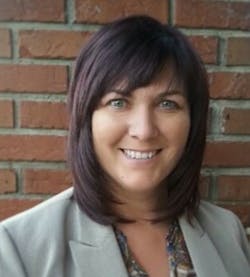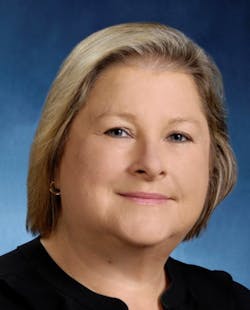Florida’s statewide Health Information Exchange, Florida HIE, has been operational since 2011, and in the past five years, the healthcare landscape has continued to change, requiring providers and healthcare organizations to invest in new health information technologies. Leaders of the Florida HIE, have, in turn, been challenged with operating an HIE organization that is both sustainable and flexible to keep up with these changes.
In 2010, Florida’s Agency for Health Care Administration (AHCA), the chief health policy and planning agency for the state, was awarded a $20.7 million grant from the Office of the National Coordinator for Health Information Technology (ONC) HIE Cooperative Agreement program to establish the Florida HIE. After a competitive procurement process, Harris Corporation, a Florida-based international communications and information technology company, was then awarded a four-year contract by AHCA to build the HIE infrastructure.
AHCA and Harris began implementing the statewide HIE in 2011 and the organization now offers three services that enable healthcare providers to share information with consent – Direct Messaging, Patient Look-UP (PLU), and Event Notification Service (ENS). The Florida HIE also is a participant in the eHealth Exchange for interstate health information exchange.
The Direct Messaging service provides healthcare organizations and providers with a way to securely send and receive messages and attachments containing a patient’s clinical data. The service is nationally accredited through Direct Trust and allows for HIPAA-compliant, encrypted transmission of protected health information (PHI).
PLU enables patient-authorized exchange of clinical data between participants through the PLU “network of networks,” which connects already existing HIEs, such as a regional network or a health system. The Florida HIE also offers a PLU Hybrid Service that enables physicians to connect to the PLU network through Direct Messaging. As of November, there were 15,000 PLU-covered hospital beds in the state of Florida, which is 23 percent of the state’s hospitals beds. Volume has steadily grown and in November 2015 there were 375,000 queries through the PLU with 23,000 matched patient records.
ENS is an automated alerting service that provides alert notifications when patients are discharged from a hospital or emergency department to health plans and accountable care organizations (ACOs), and then subsequently, the primary care provider. That service went live in the fall of 2013, and there are currently four Florida health plans subscribed – Wellcare of Florida, Sunshine State Health Plan, Molina Healthcare and South Florida Community Care Network. As of October 2015, more than 1 million Florida residents are covered by the ENS service.
In the first part of a two-part interview, Healthcare Informatics Assistant Editor Heather Landi spoke with Pamela King, Florida HIE Outreach Coordinator, and Janet Hofmeister, product line manager, Florida HIE Systems, Harris Corporation, about the steps taken to implement the Florida HIE and the challenges of keeping up with the ongoing evolution of the healthcare landscape.
Why was AHCA interested in receiving the ONC funding for a statewide HIE?
King: The bottom line for any organization implementing an HIE is to improve healthcare by getting key patient clinical information into the hands of care providers efficiently. The Agency for Health Care Administration, operating under a mission of Better Health Care for All Floridians, encourages the adoption of health technology in the state of Florida, in an effort to improve healthcare outcomes. The Agency also administers with the U.S. Centers for Medicare and Medicaid Services (CMS) electronic health record (EHR) Incentive Program, enabling hospitals and practitioners to purchase electronic health record systems and meet federal requirements for electronic exchange to improve care.
Pamela King
What were the initial steps to set up the Florida HIE?
Hofmeister: We at Harris were excited to enter into the contract in Florida especially since Harris is headquartered in Florida; it’s our home state. Initial work involved defining requirements with Heidi Fox, AHCA administrator and Florida HIE project director, and other members of the team. Then we began reaching out to organizations to gage interest in participation in the Florida HIE. We knew early in the project that there were several significant healthcare organizations, like Florida Hospital, who were interested in being early adopters. We began with applications for 20 licenses procured for the HIE, and funding to help 20 organizations join initially. After several rounds of application reviews, we selected applicants with a certain patient population, and evaluated their technical capabilities. Once the organizations were ready, our technical teams began to set up the gateway exchange of the data.
Janet Hofmeister
King: The application process was specifically for our query-based service, which is our Patient Look-Up service, and required applicants to have a certain technical readiness to connect. When we started, we wanted to ensure that everyone was on an even playing field because we were looking to not only build this technical connection, but also to build a community that was willing to share information. Many of the barriers and issues with connecting to an HIE are in the policy and trust area rather than that technical realm, so in the application process, we focused on selecting organizations that could help build the foundation for the Florida HIE; organizations that could work together and build trust with each other along the way.
So which service did the Florida HIE get up and running first?
King: The first service that actually went live within the Florida HIE was our Direct Messaging Service in July 2011. Direct Messaging is a Direct Trust-accredited email service that enables healthcare organizations and providers to securely send protected health information electronically. It’s a really interesting model because what we started out with, which was basically secure webmail for providers to use, is not where we ended. When we first started, the Direct Messaging Service actually assisted providers in meeting some of the EHR incentive program requirements (Meaningful Use Stage 1 Medicare and Medicaid EHR Incentive Program). During our implementation, those rules changed and the Direct Messaging Service no longer met those requirements, so the demands for that service diminished significantly. Although use of Direct Messaging was a valuable start, its use has diminished and been replaced by other services over time.
Hofmeister: That’s one of the interesting things about Florida being on the forefront of the HIE. ONC direction has evolved since initial guidance in 2010. Florida provided Direct Messaging independently before EHRs including similar functionality. Subsequently, the EHRs caught up and provided Direct within their applications, limiting the need for an external service. Out of this evolution, we discovered there was more of a need for services like the event notification service. I think the PLU has stayed fairly static, but other things have come and gone. We are all participating in this evolution surrounding healthcare. It’s an interesting journey.
So the Florida HIE now offers three services. Who is utilizing the services?
King: We have 10 regional healthcare organizations that are participating in the Patient Look-Up service, including hospital systems or regional HIE organizations. Those organizations are made up of more than 500 entities that include hospitals, clinics, long-term care facilities and provider practices. Right now, about 23 percent of all Florida hospital beds are covered within that group.
For the Event Notification Service, we have more than 200 hospitals that provide the patient hospital encounter data. We currently have 14 subscribers that are either health plans or ACOs. The service is intended to get basic information (such as when a patient has gone to the ER, been admitted to a hospital or been discharged from the hospital) to the health plans and ACOs more quickly than waiting for claims data. It provides an opportunity for the health plans to proactively follow up with the patient/member, including initiation of home health care visits, and overall better healthcare coordination. As part of the agreement with the health plans and ACOs, the information they receive in the alerts is passed along to the patient’s primary care provider, enabling the provider to follow up with that patient.
A limited number of providers that we have using that service continue to use Direct Messaging, about 186 users at the end of September, and 64 organizations. Several providers find it beneficial for referrals. With the new rules that have recently been released by CMS, Direct Messaging is now again beneficial in meeting EHR incentive program meaningful use requirements. We have recently seen a resurgence in registration and usage of this service.




